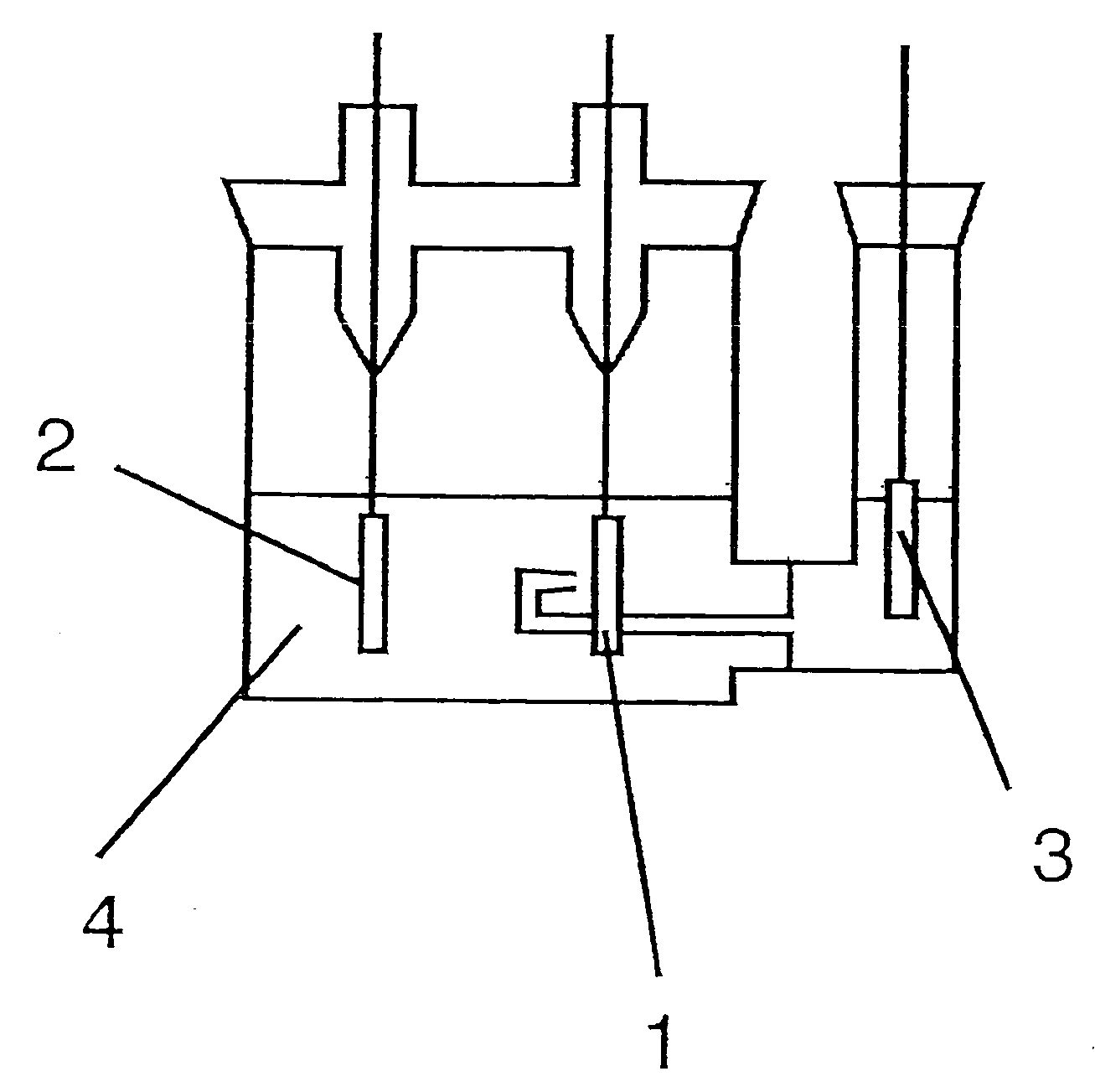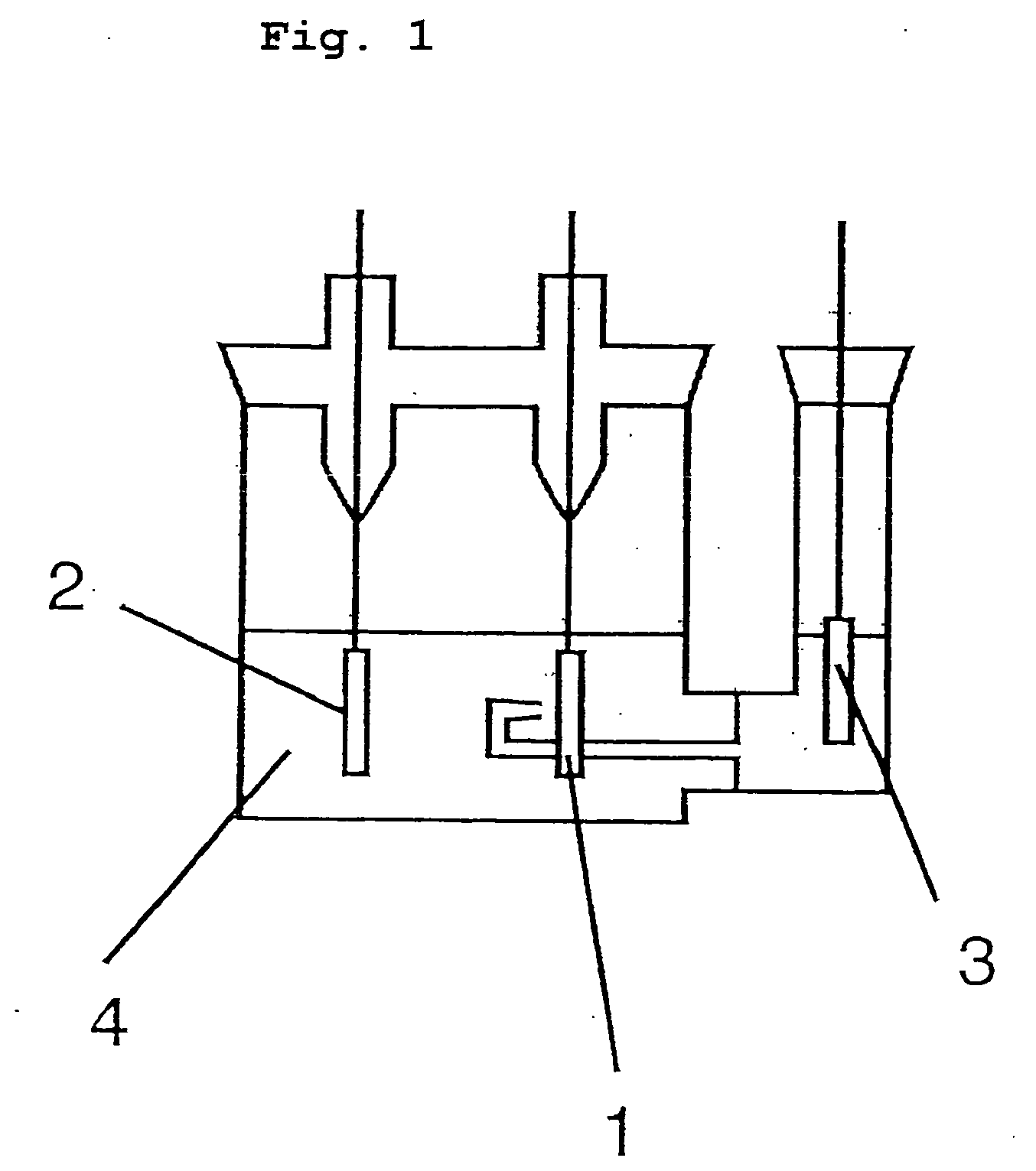Non-aqueous electrolyte secondary battery
a secondary battery and non-aqueous electrolyte technology, applied in the direction of active material electrodes, non-aqueous electrolyte accumulator electrodes, cell components, etc., can solve the problems of battery capacity degradation and insufficient improvement of elevated-temperature storage performance, so as to improve elevated-temperature storage performance and durability. , the effect of improving the durability
- Summary
- Abstract
- Description
- Claims
- Application Information
AI Technical Summary
Benefits of technology
Problems solved by technology
Method used
Image
Examples
example 1
Preparation of Lithium-transition Metal Composite Oxide
[0023] Li2CO3, (Ni0.4Co0.3Mn0.3)3O4, ZrO2, and MgO were mixed at a mole ratio of Li:(Ni0.4Co0.3Mn0.3):Zr:Mg=1.00:0.99:0.005 0.005, and the mixture was baked at 900° C. for 20 hours in an air atmosphere, so that LiNi0.396Co0.297Mn0.297Zr0.005Mg0.005O2 was obtained.
Preparation of Positive Electrode
[0024] The lithium-transition metal composite oxide prepared in the above-described manner, a carbon material as a conductive agent, and a N-methyl-2-pyrrolidone solution in which polyvinylidene fluoride was dissolved, as a binder agent, were mixed so that the weight ratio of the active material, the conductive agent, and the binder agent became 90:5:5 to prepare a positive electrode slurry. The prepared slurry was applied onto an aluminum foil as a current collector, and then dried. Thereafter, the resultant current collector was pressure-rolled using pressure rollers, and a current collector tab was attached thereto. A positive el...
PUM
| Property | Measurement | Unit |
|---|---|---|
| voltage | aaaaa | aaaaa |
| height | aaaaa | aaaaa |
| diameter | aaaaa | aaaaa |
Abstract
Description
Claims
Application Information
 Login to View More
Login to View More - R&D
- Intellectual Property
- Life Sciences
- Materials
- Tech Scout
- Unparalleled Data Quality
- Higher Quality Content
- 60% Fewer Hallucinations
Browse by: Latest US Patents, China's latest patents, Technical Efficacy Thesaurus, Application Domain, Technology Topic, Popular Technical Reports.
© 2025 PatSnap. All rights reserved.Legal|Privacy policy|Modern Slavery Act Transparency Statement|Sitemap|About US| Contact US: help@patsnap.com


